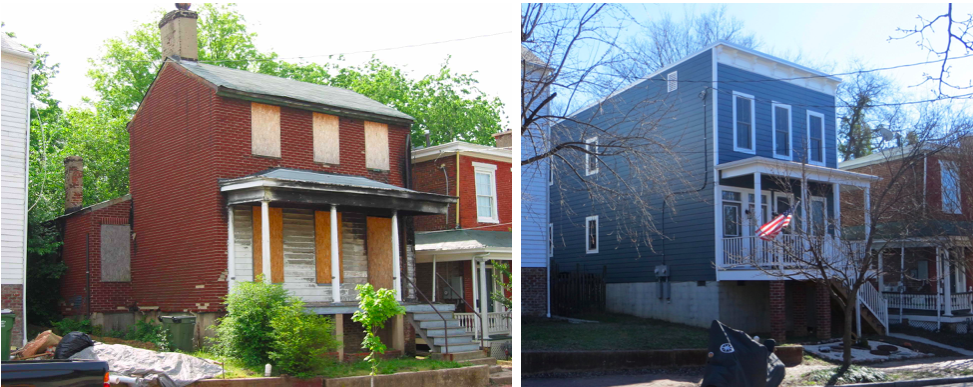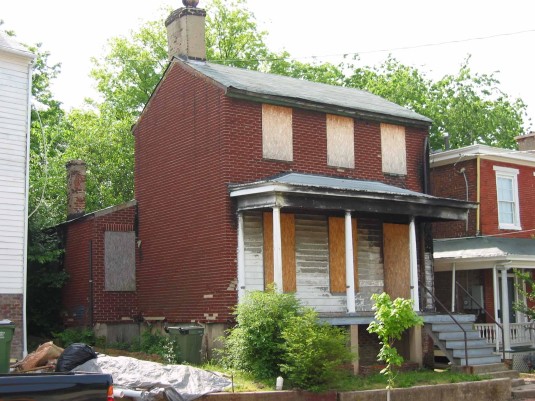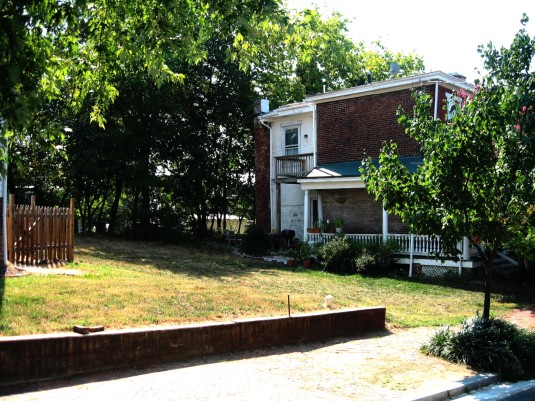RECENT COMMENTS
Eric S. Huffstutler on What is up with the Church Hill Post Office?
Eric S. Huffstutler on What is up with the Church Hill Post Office?
Yvette Cannon on What is up with the Church Hill Post Office?
crd on Power Outage on the Hill

Then and now on 22nd Street
03/06/2016 8:47 AM by John M
A then and now for 609 North 22nd Street by Selden Richardson. The house on the left is from circa 2002, back when ACORN was working on trying to save it.
Also included is a photo from the Virginia Film Commission from what I think is sometime in the 1990s. The white arrow marks 609, with some amazing context for the rest of Union Hill 20 years ago.
If you like this kind of stuff, check out the ‘before/after’ and ‘historic photos’ tags.
— ∮∮∮ —
— ∮∮∮ —
— ∮∮∮ —
— ∮∮∮ —
— ∮∮∮ —











What were the reasons why ACORN could not save the smaller historic house?
I like the Italianate replacement for 609, but it would have been better if a replica was built. That style of older houses is part of that area’s character too.I say build Italianates to replace other Italianates.
@2 without some sort of government intervention, it’s not economically viable to make a smaller house with such a challenging floor plan. By the time you buy a lot for $22,000, spend $15,000 for new utilities run and actually build the thing within CAR guidelines (hardi-plank, etc), the builder will be heavily in the red when it’s done.
I sure wish there were actually lots for 22k. Been looking for one myself but every last vacant lot In Union Hill and Church Hill has been bought up by developers.
According to MLS, 609 N 22nd was on the market for 183 days @ $29,000. It sold for $22,000 to the current owners Dec 2012. Now that demand is up, because people care about church hill, you’ll find the supply short and prices higher. Can’t have it both ways unfortunately. Right now is the time to buy $20k lots in Highland Park or North Ave, etc while demand is low and supply is high.
If I had the money, I’d make it all work.
I would think Tax Credits as well as Local and Government Grants to restore historic properties could have been utilized to save the older structure if someone would have tried?
Yeah hindsight is always 20/20. Wish I had a time machine sometimes.
@Eric H – there is the city tax abatement and the state and federal tax credits (25 and 20% of renovation costs respectively), but not aware of any other programs that would help. Generally, to get the federal credits, the property has to be income producing and held for five years, and in any event the credits must be used against tax liability and expenses can be pretty closely scrutinized, so they aren’t always well suited for homeowners or DIYers.
The credits can be syndicated to investors, but that gets complicated and usually results in cost to the homeowner (I.e. Legal fees and they only get a percentage of the value of the credits, usually about 70%-80%). It has gotten much harder to syndicate the federal credit due to court rulings. If the credits cannot be syndicated, they can be carried for 10-20 years and used incrementally, but ultimately if you can’t or don’t syndicate, you have to have sufficient tax liability to use the credit.
Finally, none of this speaks to the renovation lending process, which typically can only consider the projected after renovation value of the property. As these programs are designed to save properties that are historic but would hypothetically cost more to restore than to replace, it often costs more to renovate than a bank will lend, and the tax credits are of no value to the bank. A home that needs 185,000 in repairs and cost 50,000 to purchase but will only be worth 200,000 when finished is only eligible for 160,000 in loans (assuming 80% ltv) leaving the owner to pay 75k out of pocket. There usually isn’t anyway to capture or use the value of the approximately 90,000 in tax credits *prior* to the renovation. An FHA or other specialty loan can offer more flexibility, but these target owner occupants who can’t get the federal credit and generally won’t have the tax liability to use the credits and these loans are usually for smaller projects that might not be cost effective to syndicate.
This is just my understanding and it could be riddled with errors. But personal experience says the tax credit game is tough to learn and to play.